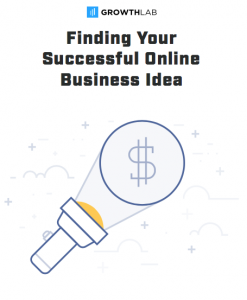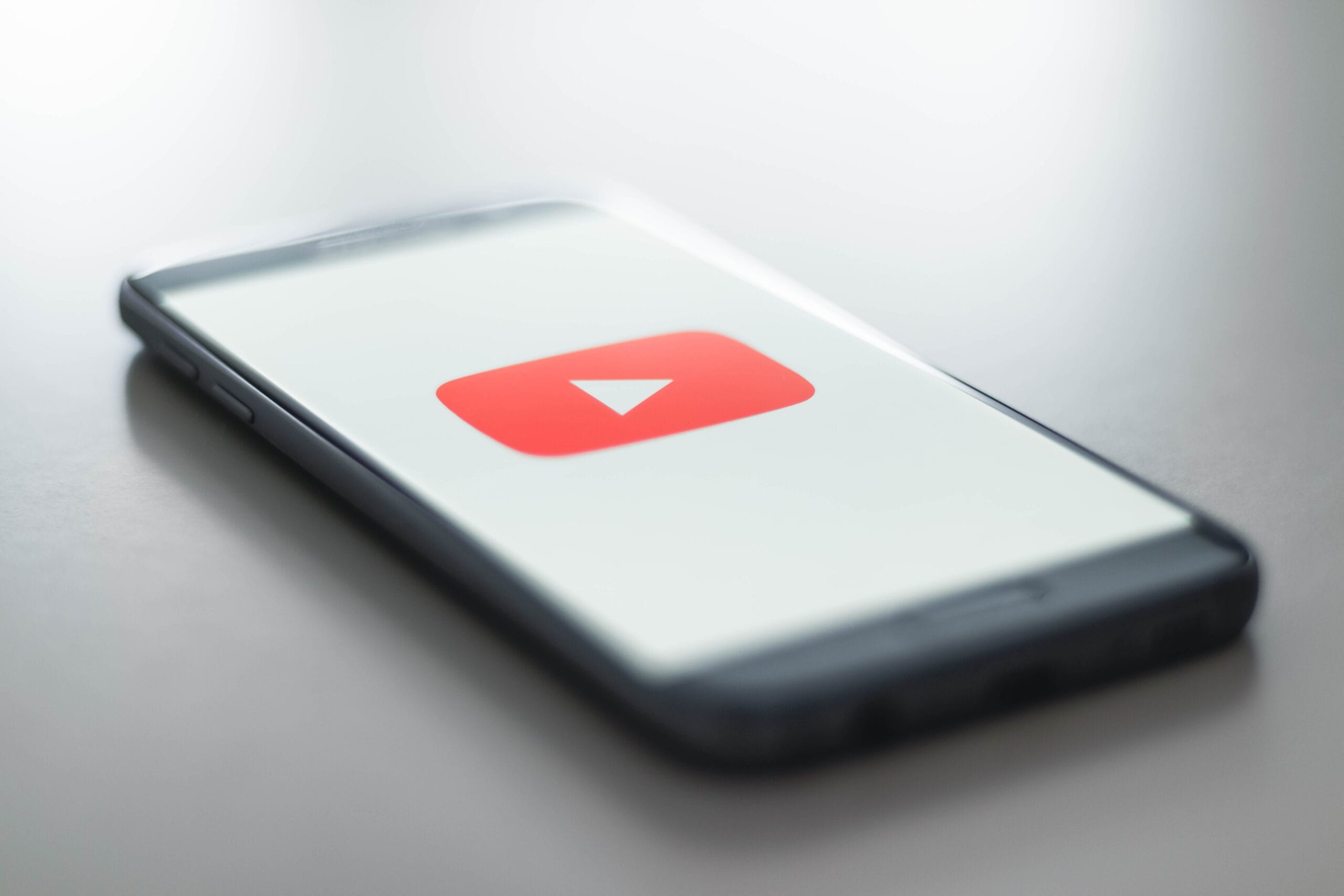
The only simple business plan you need to get your business started
While starting a business is anything but simple, a good place for any go-getting entrepreneur to start is with a simple business plan.
But forget complicated “business speak,” like executive summaries, ownership plans, operating plans, and market sizes. Your business plan should simply answer the following:
- This is the problem I’m solving.
- This is who I’m solving it for.
- This is who else is out there right now, and where they fall short.
- This is how I will make money.
That’s it!
When you can get crystal clear on the above questions, you’re able to skip agonizing over the trivial nitty-gritty — a company logo, clever product names, or a perfect homepage or email funnel — that ignores your ultimate business goal: get paying customers. And ideally, OODLES of them.

It’s like what good ol’ Abe has (maybe?) said:
“Give me six hours to chop down a tree and I will spend the first four sharpening the axe.” — Abraham Lincoln (according to the internet)
Obviously, if good ol’ Abe were building an online business today, here’s how he would do things.
How to turn your simple business plan into a Profit Playbook
We’ve helped thousands of students get their online business off the ground with helping them find a profitable idea and then coming up with a high-level view of their business via our Profit Playbook.
Think about a professional sports game. If you think the teams are relying entirely on skill and improvisation, you’d be mistaken. The coach has already planned for every variable and different sorts of orientations on the field so they know exactly what to do and how to respond to the ever-changing pace and scenarios that come up.
Same thing with your Profit Playbook. With the playbook in hand, you will always know:
- Who to reach (your potential customers)
- Where to reach them (where your potential customers hang out or research, aka “fishing holes”)
- What problems they’re facing (burning pains)
- What solutions you can offer (“quick wins”)
- Multiple ways that you can potentially monetize (products to sell)
By the time you are ready to build a product to sell, you already know what they’re going to look like and how you’re going to find paying customers.
So grab a piece of paper or napkin, or open up a Google Doc sheet. Let’s go through each of the five steps required to create your playbook.
1. Identifying your potential audience (and customers)
Other than coming up with a business idea and validating it, you should know where to find your potential customers. In other words, you know where they hang out, the websites they read, the people they follow, etc.
You might already “know” who your target market is, but I challenge you to question what you think you’re certain of at this point. You don’t want to close off any promising avenues when you’re just getting started. As an example, let’s say your idea is to help people lose weight. A few groups you could target:
- Moms who just had a baby and would like to shed their baby weight
- Office employees who have a beach vacation coming up later in the year
- To-be brides who want to prepare to fit in their wedding dress
- Single people who want to change the way they look to feel more attractive to potential mates
- Parents who discover that they don’t have the energy to keep up with their kids
Think broadly and use your imagination to come up with all sorts of people who could use your help. No group of people is too crazy. The goal is to write down ALL of the potential audiences, without worrying if they fit into your business yet.
Your turn.
Action step: List AT LEAST 5 potential audiences who might be interested in your idea.
2. Finding your potential audience
After knowing the kinds of customers you want to help, the next step is to figure out where to find these folks so that you can, at a later time, attract them to come to your website through guest posting. They could be…
- Readers of popular sites like Lifehacker, Mindbodygreen, or someone’s blog
- Users of open forums like Reddit
- Subscribers and followers to specific YouTube channels, Facebook pages, and Instagram influencers
We call these places where they congregate “fishing holes.” The other side of the coin here is to imagine what these people are like. What kind of person are they?
For example, if they’re an avid reader of a site like Lifehacker, you can deduce that they’re into personal development, and if we go a little deeper, are possibly an autodidact — someone who likes to learn and do things on their own. If that’s the case, maybe they read similar sites like MakeUseOf, or cross over to other areas of personal development like fitness and read blogs like Nerd Fitness.
These fishing holes don’t have to be directly related to your topic. You can find ideas that may be tangentially related to another industry. Here’s an example of a crossover that makes sense:

As you wade through all the possible fishing holes, you start to paint a clearer picture of just how big your market can be — and potentially how profitable your idea is.
Action step: List AT LEAST 5 fishing holes where you can find your potential audience.
Want to build a business that enables you to live YOUR Rich Life? Get my FREE guide on finding your first profitable idea.
3. Solving the BIG problems your customers need help with
The previous two action steps helped you build a model of what your ideal customers look like. Now we get into their heads.
Specifically, we find out about their problems. What keeps them up at night? What problems do they face that they wish they could wave a magic wand and have automatically solved? These are your customers’ burning pains, which your products and services would also orbit around.
To get inside your customers’ heads, we use something called the Immersion Strategy, where you really immerse yourself among your audience. Go to the fishing holes and read the comments, follow the links, watch the videos, and see what people search for on Google.
Helpful link: The Ultimate Guide to Profitable Business Ideas
Your goal is to truly understand what their burning pains are and also the way they describe them — their truth. Tune in closely to the words they use with their closest friends. For example, if someone wants to lose weight, they wouldn’t say, “I’d like to eliminate the adipose tissue around my body to correct my triglyceride levels.”
NO ONE TALKS LIKE THAT.
They’d use real, everyday language that sounds more like, “I hate the way my underarms jiggle when I clap or raise my hands. If only there was a way I could tone them up, I’d feel so much better about wearing sleeveless shirts.” You can tell this is a burning pain because of the emotions they highlight, and it feels visceral and relatable. Other examples of burning pains:
- “I never know what to talk about on the first date. What do I do when I run out of things to say?”
- “I absolutely dread making small talk with my coworkers — it’s so pointless.”
- “The weight room is so intimidating. I don’t even know what to do and everyone looks so fit! I’d feel out of place.”
Action step: List AT LEAST 5 burning pains your potential audience might have.
4. Providing solutions to your customers
Once you’ve taken the time to learn about your customers’ problems and burning pains, you should start to generate about a bajillion ways you could help them. Your mind might go to a program or maybe even a 12-week course, but you need to earn your customers’ trust first with a quick win, aka a “crunchy solution.”
They’re “crunchy” because they give someone an immediate benefit. This is what you would provide to entice people to join your email list, like Nerd Fitness has done here:

Look at your customers’ burning pains. Your crunchy solution doesn’t have to completelysolve their problem (your full product or service should), but it has to give them the start of exactly what they want. Ask yourself: What tactics can you come up with that would immediately solve some of their burning pains? Examples:
- A 4-week bodyweight workout plan that someone who wants to get in shape can do in their home
- An email script that you and others have successfully used to land a job interview
- A 7-day itinerary for the perfect getaway in Tokyo
Your readers’ reaction to your crunchy solutions (perhaps measured via the number of downloads or email opt-ins) is a great way to test-drive product ideas that you might want to sell down the road (see next section).
Action step: List AT LEAST 5 crunchy solutions you can come up with.
5. Conceptualizing the products you can sell
This is the fun part that everyone loves: building cool stuff that makes you money. Up ‘til now, you’ve learned:
- Who your potential customers are
- Where they hang out
- What problems they have
- The solutions you can provide
The next leap is to turn those solutions into full products that your customers will happily pay you money for. You likely won’t be at this stage within a couple of days or months — sometimes it may even take years! But fast forward to a year and imagine that you’ve built your email list to thousands of subscribers.
You’ve talked to them enough that you know their pains, hopes, dreams, and frustrations; and you’ve already given them crunchy solutions. You’ve already proven yourself as someone they can turn to for help. All that’s left is for you to create a product (or products) that they would be more than happy to pay for.
This is your premium stuff: the courses, the books, the webinars, or high-quality coaching, to name a few. You might start small, like with an e-book; then you gradually create more and bigger products: a three-day video series, an eight-week course, or even an in-person weekend workshop.
Heck, I dove right into a full-fledged eight-week course as my first product. You can read more about how I did that here. But what you choose to do is up to you.
Let’s say you’re an authority on helping people improve their social skills. Here are some ideas on products you might be able to create and their pricing:
- A basic social skills e-book ($47)
- A short job-interviewing video course ($197)
- A 1-on-1 live social skills teardown on Skype ($297)
- A premium-level executive soft skills course ($997)
- A social-fluency weekend workshop ($3,000)
The more premium the product, the higher the price (and likely it appeals to fewer but much more qualified buyers).
At this point, it’s OK that you don’t know how to create these products just yet — you don’t HAVE to know. You’re just visualizing what’s possible now and laying down the groundwork.
Action step: List AT LEAST 5 potential products (or services) you can offer.
Putting it all together
By the time you finish creating your Profit Playbook, you’ll be leaps and bounds ahead of other people just starting out in their business. Most people immediately begin building as soon as they have an idea, and as a result, likely run into all sorts of dead ends while they just hope for the best.
But you’ve done things differently by virtually guaranteeing your success. You now know who to reach, where to find them, what problems they’re facing, what solutions you can offer them, and multiple ways you can potentially monetize.
And the best part is, you didn’t waste a bunch of time, money, and energy creating duds. Plus, if one thing doesn’t work you just move to the next audience, fishing hole, solution, or product.
That’s the beauty of having a playbook to guide you to the profitable business of your dreams.
But what if you don’t even have an idea?
Or your idea didn’t work out after working on our Profit Playbook?
Never fear.
Over the years, we’ve developed a system that can help you rapidly test and refine business ideas on the fly. In other words, you can determine if something will be profitable BEFORE you waste an ounce of energy pursuing it.
You’ll find everything you need to know in a free guide we’ve put together called Finding Your Successful Online Business Idea. In it, you learn:
- How starting with “ideas that suck” can lead to big breakthroughs
- The 4 questions you can ask if you’re really stumped on finding an idea
- A 4-part Demand Matrix that’ll determine how much you can charge and how many people will buy your product

Enter your name and email below to get instant access to everything. It’s 100% free, and we’ll never share your information with anyone.
Learn to take control of your finances and spend your money GUILT-FREE with our free Ultimate Guide To Personal Finance below:



